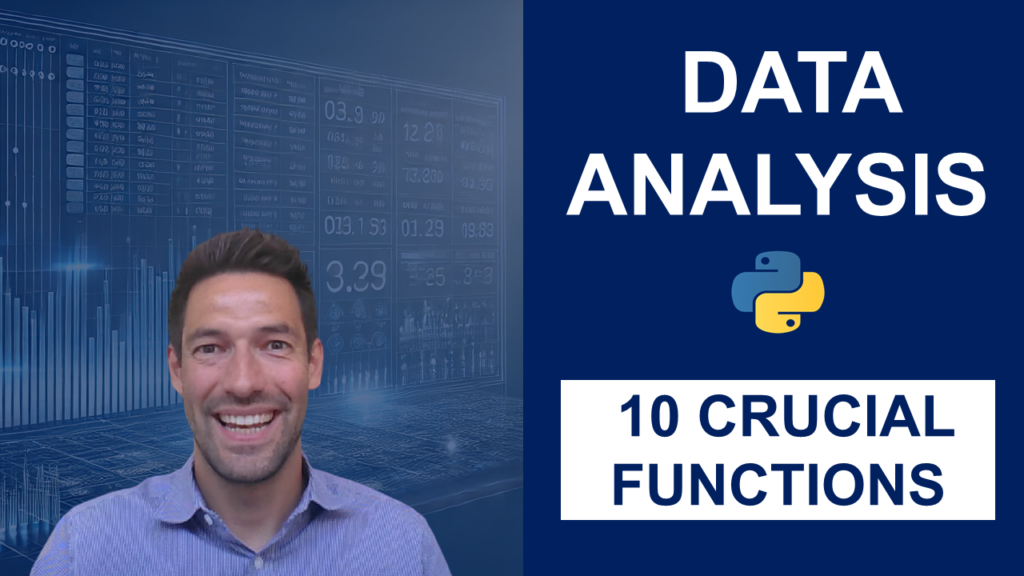
Data analysis has become a critical skill in today’s data-driven world. Whether you are a business professional, a data scientist, or a student, understanding how to analyze data effectively is crucial. For many, Excel has been the go-to tool for data analysis for years. However, as the volume and complexity of data grow, Python has emerged as a powerful alternative. In this article, we’ll explore why Python is often considered superior to Excel for data analysis.
1. Scalability and Performance
Excel’s Limitations
Excel is an excellent tool for small to medium-sized datasets. It’s user-friendly and provides a wide range of built-in functions and formulas. However, when dealing with large datasets, Excel starts to show its limitations. Excel can handle up to 1,048,576 rows and 16,384 columns, but performance significantly degrades as you approach these limits. Complex calculations or large pivot tables can slow down Excel, sometimes causing it to crash.
Python’s Strength
Python, on the other hand, is built to handle large datasets efficiently. With libraries like Pandas, NumPy, and Dask, Python can process millions of rows and perform complex calculations without breaking a sweat. Python is also highly scalable, making it suitable for both small datasets and large-scale data analysis tasks. For example, Pandas can easily handle datasets with millions of rows, and with Dask, you can scale up to handle even larger datasets.
2. Automation and Reproducibility
Excel’s Manual Processes
In Excel, many tasks, such as data cleaning, sorting, and filtering, are done manually. While this may be fine for one-off tasks, it becomes inefficient when you need to repeat the same analysis multiple times. Additionally, manual processes are prone to human error, which can lead to incorrect results.
Python’s Automation Capabilities
Python excels in automating repetitive tasks. By writing scripts in Python, you can automate the entire data analysis process, from data cleaning to visualization. This not only saves time but also ensures that your analysis is reproducible. If you need to repeat the analysis on a new dataset, you can simply run the same script without having to redo any manual steps. Moreover, Python’s integration with tools like Jupyter Notebooks allows you to document your analysis, making it easy to understand and share with others.
For example, you can write a Python script that:
- Cleans and preprocesses the data
- Performs analysis
- Generates visualizations
- Exports the results to a file
This entire process can be automated and run with a single command.
3. Advanced Data Manipulation and Analysis
Excel’s Functions and Formulas
Excel provides a wide range of functions and formulas for data analysis. However, when it comes to advanced data manipulation, Excel’s capabilities are limited. For example, merging multiple datasets, performing complex group operations, or applying custom functions to large datasets can be cumbersome in Excel.
Python’s Flexibility and Power
Python, with its extensive libraries, offers unmatched flexibility for data manipulation. Pandas, for instance, provides powerful data structures like DataFrames, which make it easy to manipulate and analyze data. You can perform complex operations such as:
- Merging and joining multiple datasets
- Grouping data and applying custom aggregation functions
- Filtering, sorting, and transforming data
Python also supports advanced statistical analysis and machine learning through libraries like SciPy and Scikit-learn. This opens up possibilities for more sophisticated analysis that goes beyond what Excel can offer.
4. Data Visualization
Excel’s Charting Tools
Excel provides a variety of chart types and visualization tools that are easy to use. However, Excel’s visualization options are relatively basic and can be limiting for more advanced data visualization needs.
Python’s Visualization Libraries
Python offers several powerful libraries for data visualization, such as Matplotlib, Seaborn, and Plotly. These libraries allow you to create highly customized and interactive visualizations that go far beyond Excel’s capabilities. With Python, you can create complex plots, such as:
- Heatmaps
- Pair plots
- 3D visualizations
- Interactive dashboards
For instance, Plotly allows you to create interactive visualizations that can be embedded in web applications, making it easier to share insights with others.
5. Integration with Other Tools and Data Sources
Excel’s Connectivity
Excel can connect to various data sources like SQL databases, cloud services, and other spreadsheets. However, integrating Excel with other tools and automating these processes can be challenging and often requires additional software or plugins.
Python’s Seamless Integration
Python, being a versatile programming language, integrates seamlessly with various databases, APIs, and cloud services. Whether you need to pull data from a SQL database, access an API, or work with cloud-based data storage, Python has the tools to do it efficiently. Python’s extensive ecosystem of libraries and frameworks means that you can easily integrate your data analysis with machine learning models, web applications, and more.
For example, you can use SQLAlchemy to connect to databases, Requests to interact with APIs, and Boto3 to work with AWS cloud services.
6. Cost-Effectiveness
Excel’s Licensing Fees
Excel is a part of the Microsoft Office Suite, which requires a subscription or one-time purchase. While many organizations already have access to Excel, it’s an additional cost for individuals or small businesses.
Python’s Open-Source Nature
Python is open-source and free to use. All the libraries mentioned—Pandas, NumPy, Matplotlib, Seaborn, and others—are also open-source and free. This makes Python a cost-effective option for data analysis, especially for startups, small businesses, and individuals who need powerful tools without the associated costs.
7. Community Support and Resources
Excel’s User Base
Excel has been around for decades and has a large user base. There are plenty of tutorials, forums, and resources available for learning Excel. However, most of these resources focus on basic to intermediate tasks.
Python’s Growing Community
Python’s popularity has skyrocketed, especially in the fields of data science and machine learning. The Python community is large and active, constantly contributing to the development of new libraries and tools. There are countless tutorials, courses, forums, and documentation available online, making it easier for beginners to learn and advance in Python. Additionally, platforms like Kaggle offer datasets and competitions that help you practice and improve your skills in a real-world context.
Conclusion
While Excel remains a valuable tool for certain types of data analysis, Python offers greater flexibility, scalability, and power for more complex tasks. Python’s ability to handle large datasets, automate repetitive tasks, and integrate with other tools makes it a superior choice for data analysis. Whether you’re a beginner or an experienced analyst, investing time in learning Python can significantly enhance your data analysis capabilities and open up new opportunities.
If you’re interested in getting started with Python, check out our guide on installing Python and dive into the world of data analysis with our beginner-friendly tutorials.
